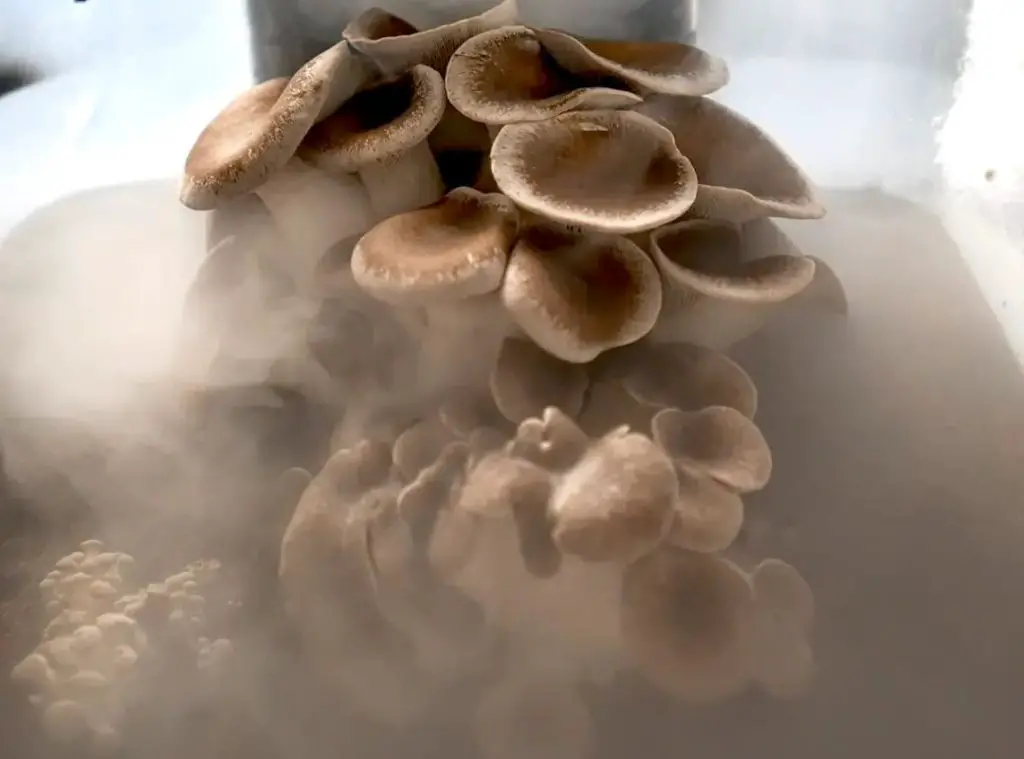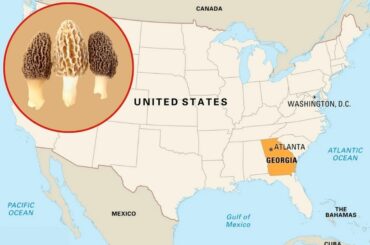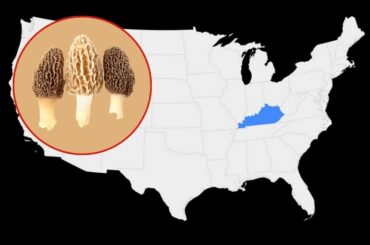When you spend hours of time preparing your monotub, you don’t expect it to stall. But unfortunately, many cultivators run into this issue. We keep hearing again and again, “Why do my monotubs keep stalling?” This article will discuss some of the most common reasons why monotubs stall and how to fix them.

Why do my monotubs keep stalling?
Contents
There are several reasons why your monotub may be stalling. Here are some of the most common:
01. Not Enough Airflow
One of the most common reasons why monotubs stall is because there isn’t enough airflow. Monotubs need a lot of airflow to stay healthy, and if there isn’t enough, they can quickly stall. To fix this problem, make sure that you have at least two fans running in your monotub. If possible, try to get a fan that blows directly into the tub. This will help ensure that there is enough airflow.
02. Not Enough Humidity
Another common reason for monotub stalls is that there isn’t enough humidity. Monotubs need a high level of humidity to stay healthy, and if it drops too low, they can stall. To fix this, you need to make sure that you’re using a humidifier in your monotub. A simple ultrasonic humidifier will do the trick. Just make sure that it’s placed close to the tub so that it can effectively raise the humidity levels.
03. Too Much Heat
Monotubs can also stall if they get too hot. Monotubs need to be kept at a consistent temperature, and if it rises too high, they can stall. To fix this problem, make sure that you’re using a fan to circulate the air in your monotub. This will help keep the temperature down. You can also try adding ice packs or frozen water bottles in the tub to help keep it cool.
04. Monotub is already into the fruiting stage
If your monotub is already in the fruiting stage, it will stop growing the mycelium further, which may seem like it is stalling. This, however, is completely normal and warrants no danger. The mycelium will continue to produce mushrooms even though it has stopped growing. In this case, you don’t need to do anything and just wait for the mushrooms to be fruit.
05. Mycelium is colonizing slowly
Some mycelium takes much longer to colonize than others. This is completely normal and nothing to worry about. If your mycelium is taking a long time to colonize, it doesn’t mean that it’s stalling. To speed up the colonization process, you can try using a heat mat. Place the heat mat under the tub and ensure it’s set to the correct temperature. This will help the mycelium colonize faster. You can also try shaking the tub. This will help break up the mycelium and speed up the colonization process.
06.Bacterial/ Fungal Contamination
The worst you can expect in terms of why my monotubs keep stalling is bacterial/Fungal contamination. Once bacteria or other fungus get into your tub, they can quickly take over and stall the growth of your mycelium. Since there are several different types of bacteria and fungi, it’s hard to say how to prevent them from getting into your tub.
However, you can try to sterilize your tools and equipment before using them. This will help reduce the chances of bacteria getting into your tub.
How do bacteria get into your tub?
Bacteria can get into your tub in several ways. Here are some of the most common:
Tools and equipment: If you’re not sterilizing your tools and equipment before using them, you’re increasing the chances of bacteria getting into your tub.
Substrate: If you’re using a contaminated substrate, it can introduce bacteria into your tub.
Air: Bacteria can also come in through the air. This is why it’s so important to have good airflow in your tub.
Water: If you’re using contaminated water, it can also introduce bacteria into your tub.
To prevent bacteria from getting into your tub, make sure that you’re taking the proper precautions. This includes sterilizing your tools and equipment, using a clean substrate, and having good airflow. If you do find that your tub has been contaminated, you can try to salvage it by starting over with a new batch of substrates. This will help ensure that the bacteria don’t spread to your other tubs.
What to do if my monotub is contaminated?
You cant avoid contaminations even if you use all the safety precautions up to par. Once it happens, you have two options:
Dump it: The first and most common option is to simply dump the tub. This is the easiest and quickest way to get rid of the contamination.
Start over: The second option is to start over. This is a bit more work, but it will allow you to salvage some of the substrates.
To start over, you’ll need to remove the top layer of the substrate. This is where the contamination is likely to be. Once you’ve removed the top layer, you can start over with a new batch of substrates. When you’re starting over, make sure that you’re taking the proper precautions. This includes sterilizing your tools and equipment, using a clean substrate, and having good airflow.
Important: Although this method work for some contaminations, some will not be salvageable.
If you’re unsure, it’s always best to err on the side of caution and dump the tub. To better understand the contamination and what to do, read the below mushroom contamination types.
Types of contaminations
Several different types of contaminations can occur in a monotub. Here are some of the most common:
Trichoderma
Also known as green mold, Trichoderma harzianum is the most common type of mushroom contamination. It’s a fast-growing mold that can quickly take over a tub. Contaminated tools and equipment usually cause Trichoderma contamination. It can also adhere to the monotub through mites, flies, your hand, or clothing.
However, there must be a significant amount of Trichoderma spores present for it to take over.
How to identify
Out of all the contamination types, this is the easiest to spot as it produces green-colored spores after fruiting. The spores will be visible on the top of the substrate and on the sides of the tub. Unfortunately, it is difficult to identify this contamination at the beginning because Trichoderma mycelium is also white. If you see green mold on your substrate, it’s a good indication that your tub is contaminated.
Treatment
The best way to treat green mold is to dump the tub. This is the only way to ensure that the mold doesn’t spread to your other tubs. In this case, salvaging the substrate is not an option as the mold will continue to grow.
Prevention
The best way to prevent Trichoderma is to sterilize your tools and equipment before each use. You should also avoid using contaminated substrate, water, or air.
Bacillus spp. Bacteria
Out of all bacterial infections, Bacillus spp. is the most common one that affects monotubs. It’s a soil-borne bacteria that can quickly take over a tub. Also known as sour rot or wet spot, this type of contamination usually affects tubs that have poor drainage. The bacteria thrive in moist conditions and can quickly spread through the substrate. Further, this bacteria is hard to kill as its endospores are heat resistant. Hence, sterilizing may not always be effective.
How to identify
The first sign of this contamination is a sour smell. This is followed by brown or yellow spots on the substrate. As the bacteria grow, the spots will become larger and more numerous. Eventually, the entire substrate will be affected. When affected, the substrate will be slimy and excessively wet.
Treatment
There is not much you can do other than let the mycelium fight for its survival. If your mycelium culture is strong enough, it will consume the bacteria and continue to grow. In the meantime, you should separate the infected monotubs from your other ones. This will prevent the bacteria from spreading. To help the mycelium, you can also add a small amount of hydrogen peroxide to the tub.
This will kill some of the bacteria and give the mycelium a fighting chance. If the mycelium is successfully fighting off, it will secrete mycelium pee. If the bacteria has spread to only a small portion of the substrate, you can also remove the affected area. However, this is only possible if the mycelium has not fully colonized the substrate.
Prevention
The best way to prevent this type of contamination is to have good substrate drainage. This will prevent the bacteria from thriving in wet conditions. You should also avoid using contaminated substrate, water, or air. Since bacteria endospores are hard to kill, sterilizing the substrate won’t work. However, you can kill the bacteria by steaming it when it is germinated. For that, you can soak the substrate for about 12 to 24 hours. Then, drain and rinse it before steaming for 30 minutes.
Cobweb Mold (Dactylium Mildew)
Rather than one species of mold, cobweb mold is a subfamily of several similar-looking mold species that often cause soft rot in mushrooms. Grain spawn and monotubs are generally contaminated with cobweb mold.
How to identify
Cobweb mold is characterized by a web-like growth that’s often white or gray in color. The mold can easily spread through the substrate and quickly takes over the tub. Further, it produces small black spots that are filled with spores. These spots are called microsclerotia and can survive for years in adverse conditions. What’s terrifying is that cobweb mold can spread to the entire tub in as little as 24 hours.
Treatment
Unfortunately, there is no treatment once your tub is contaminated with cobweb mold. The only way to save your other tubs is to dump the one that’s infected. In some cases, you may be able to salvage the substrate if the infection is caught early enough. For this, you need Hydrogen Peroxide. Spray Hydrogen Peroxide on the contaminated areas as much as possible to kill the mold.
Prevention
The best way to prevent cobweb mold is to have good air circulation in your grow room. This will help to dry out the substrate and make it inhospitable for the mold. You should also avoid using contaminated substrate, water, or air.
How do prevent monotubs from keep stalling?
Now that you know the causes for monotubs to keep stalling and ways to treat and prevent each cause. Let’s look at some general tips to prevent monotubs from stalling.
Sterilize everything
Since bacteria and mold can both be present even if you can’t see them, it’s important to sterilize everything. This includes your hands, clothing, tools, and anything else that comes into contact with the tub.
Use quality ingredients
One of the best ways to prevent mushroom contamination is to use quality ingredients. This includes using filtered water and high-quality substrate.
Avoid contaminants
It’s also important to avoid contaminants. This means not introducing any new organisms into the tub. This includes things like insects, hair, and outside air.
Keep it clean
In general, you want to keep your grow room and everything in it clean. This includes wiping down surfaces, vacuuming regularly, and using a HEPA filter. Further, you should clean yourself as much as possible before entering the grow room.
Have good air circulation
Good air circulation is important for several reasons. First, it will help to keep the substrate dry. Second, it will help to prevent mold and bacteria from spreading. Finally, it will help to circulate fresh air and CO2.
Monitor the tub
Finally, it’s important to monitor your tubs regularly. This means checking for signs of contamination and taking action immediately if you see anything suspicious.
Conclusion
One of the most common reasons for monotubs to keep stalling is contamination. This can be caused by bacteria, mold, or other contaminants. The best way to prevent monotub contamination is to sterilize everything, use quality ingredients, and avoid contaminants. Additionally, you should keep the grow room clean and have good air circulation.
Finally, it’s important to monitor the tubs regularly so that you can take action immediately if you see anything suspicious. If you do find contamination, you may be able to save the tub if you catch it early enough. Otherwise, you will need to dump the tub and start over.
Read Next : Turkey Tail Mushroom Side Effects? (10 Minutes Read)




